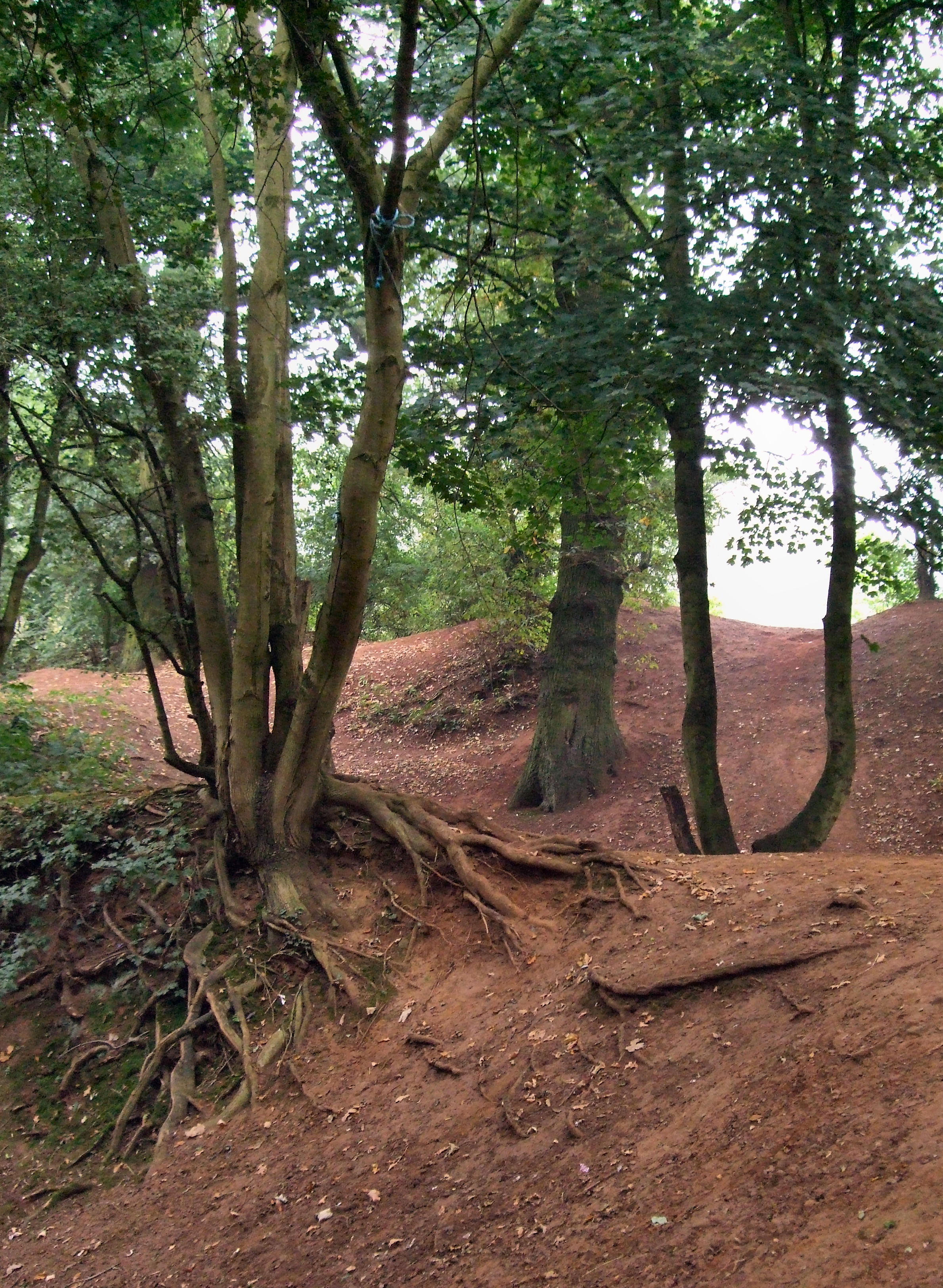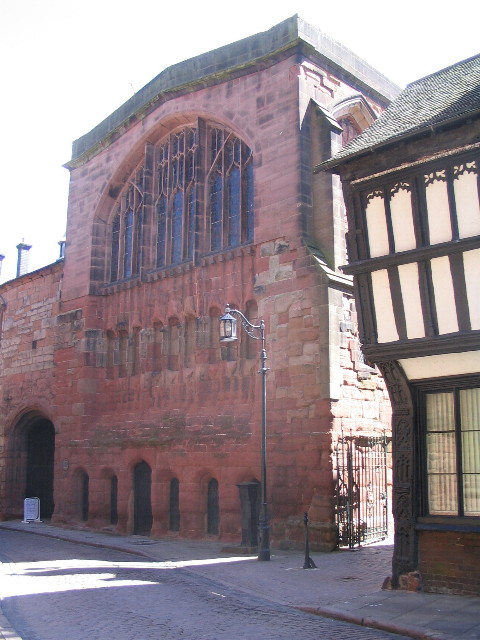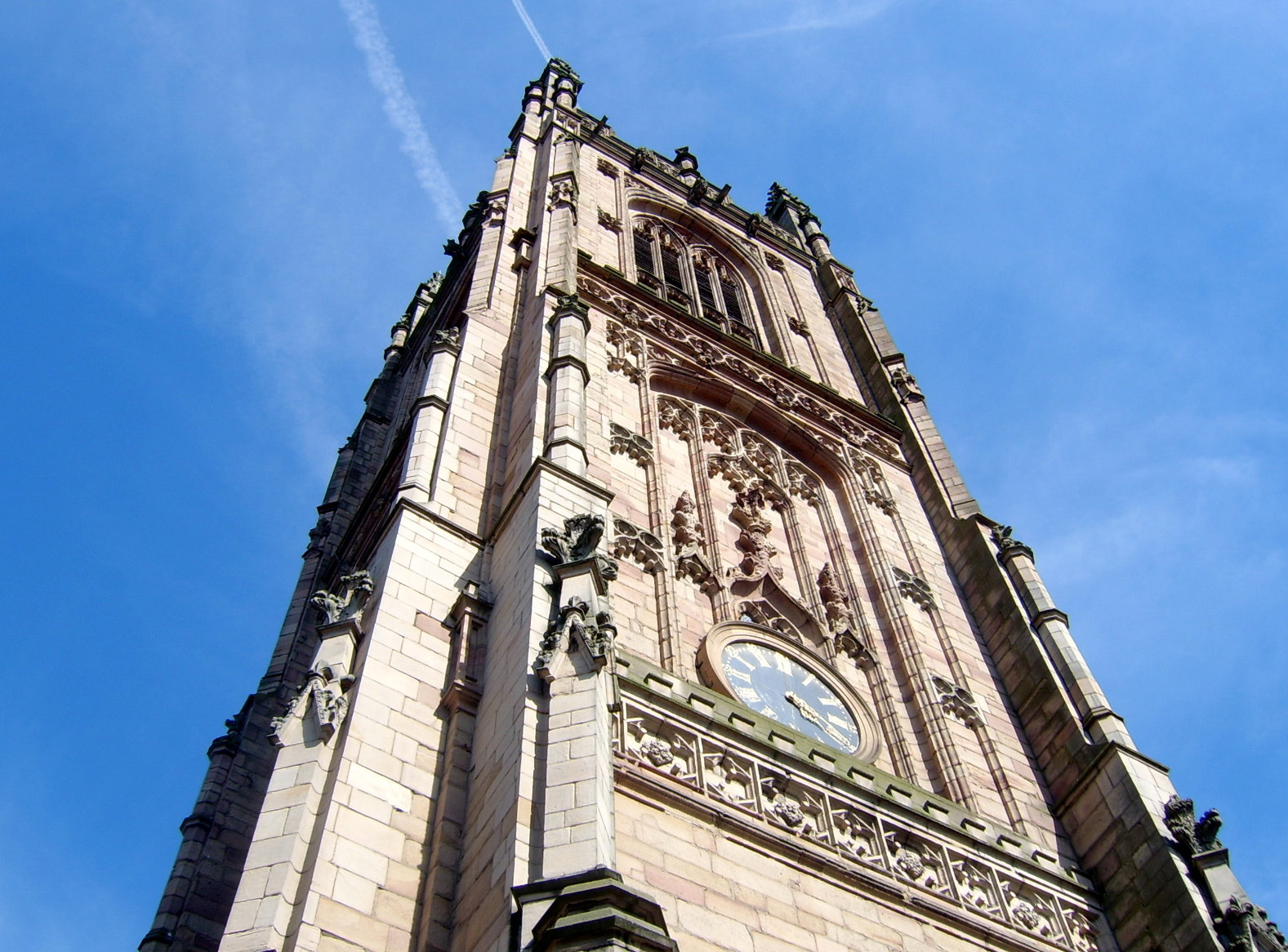|
Colin Lyman
Colin Chad Lyman (9 March 1914 – 9 May 1986) was an English footballer who played as a forward. He scored 54 goals in 188 league games in the Football League playing for West Bromwich Albion, Southend United, Northampton Town, Tottenham Hotspur, Port Vale, Nottingham Forest, and Notts County. He went on to serve Nuneaton Borough as player-manager from August 1948 to December 1950. Playing career Lyman played for Rushden Town and West Bromwich Albion, before playing one Third Division South game at Roots Hall for Southend United in 1933. He moved on to league rivals Northampton Town, turning professional at the club in 1935. He scored 29 goals in 86 league games at the County Ground in 1934–35, 1935–36, and 1936–37. He then moved up to the Second Division with Tottenham Hotspur for a £3,000 fee. He spent the 1937–38 and 1938–39 seasons at White Hart Lane, and scored 11 goals in 54 league and cup matches. He also guested for Partick Thistle, Leicester City, Nott ... [...More Info...] [...Related Items...] OR: [Wikipedia] [Google] [Baidu] |
Northampton
Northampton () is a market town and civil parish in the East Midlands of England, on the River Nene, north-west of London and south-east of Birmingham. The county town of Northamptonshire, Northampton is one of the largest towns in England; it had a population of 212,100 in its previous local authority in the 2011 census (225,100 as of 2018 estimates). In its urban area, which includes Boughton and Moulton, it had a population of 215,963 as of 2011. Archaeological evidence of settlement in the area dates to the Bronze Age, Romans and Anglo-Saxons. In the Middle Ages, the town rose to national significance with the establishment of Northampton Castle, an occasional royal residence which regularly hosted the Parliament of England. Medieval Northampton had many churches, monasteries and the University of Northampton, all enclosed by the town walls. It was granted a town charter by Richard I in 1189 and a mayor was appointed by King John in 1215. The town was also the sit ... [...More Info...] [...Related Items...] OR: [Wikipedia] [Google] [Baidu] |
County Cricket Ground, Northampton
The County Ground is a cricket venue on Wantage Road in the Abington area of Northampton, England. It is home to Northamptonshire County Cricket Club, and was used by Northampton Town F.C. from 1897 to 1994. Cricket Northamptonshire played their first match at the ground in 1886 before competing in the Minor Counties Championship competition between 1895 and 1904, winning the title three times. They were accepted into the County Championship and played their first first-class match at the ground on 5 June 1905. Northamptonshire drew with Leicestershire in a rain-hit match that only permitted 75 overs of play. The County Cricket Ground is known to be a venue which favours spinners, and in the last County Championship game of 2005, Northamptonshire's two spin bowlers Jason Brown and Monty Panesar took all 20 wickets for Northamptonshire. The County Ground hosted two 1999 Cricket World Cup matches: South Africa's victory over Sri Lanka and Bangladesh's first World Cup victo ... [...More Info...] [...Related Items...] OR: [Wikipedia] [Google] [Baidu] |
World War II
World War II or the Second World War, often abbreviated as WWII or WW2, was a world war that lasted from 1939 to 1945. It involved the World War II by country, vast majority of the world's countries—including all of the great powers—forming two opposing military alliances: the Allies of World War II, Allies and the Axis powers. World War II was a total war that directly involved more than 100 million Military personnel, personnel from more than 30 countries. The major participants in the war threw their entire economic, industrial, and scientific capabilities behind the war effort, blurring the distinction between civilian and military resources. Air warfare of World War II, Aircraft played a major role in the conflict, enabling the strategic bombing of population centres and deploying the Atomic bombings of Hiroshima and Nagasaki, only two nuclear weapons ever used in war. World War II was by far the List of wars by death toll, deadliest conflict in hu ... [...More Info...] [...Related Items...] OR: [Wikipedia] [Google] [Baidu] |
Coventry City F
Coventry ( or ) is a City status in the United Kingdom, city in the West Midlands (county), West Midlands, England. It is on the River Sherbourne. Coventry has been a large settlement for centuries, although it was not founded and given its city status until the Middle Ages. The city is governed by Coventry City Council. Historic counties of England, Formerly part of Warwickshire until 1451, Coventry had a population of 345,328 at the 2021 census, making it the tenth largest city in England and the 12th largest in the United Kingdom. It is the second largest city in the West Midlands (region), West Midlands region, after Birmingham, from which it is separated by an area of Green belt (United Kingdom), green belt known as the Meriden Gap, and the third largest in the wider Midlands after Birmingham and Leicester. The city is part of a larger conurbation known as the Coventry and Bedworth Urban Area, which in 2021 had a population of 389,603. Coventry is east-south-east of ... [...More Info...] [...Related Items...] OR: [Wikipedia] [Google] [Baidu] |
Derby County F
Derby ( ) is a city and unitary authority area in Derbyshire, England. It lies on the banks of the River Derwent in the south of Derbyshire, which is in the East Midlands Region. It was traditionally the county town of Derbyshire. Derby gained city status in 1977, the population size has increased by 5.1%, from around 248,800 in 2011 to 261,400 in 2021. Derby was settled by Romans, who established the town of Derventio, later captured by the Anglo-Saxons, and later still by the Vikings, who made their town of one of the Five Boroughs of the Danelaw. Initially a market town, Derby grew rapidly in the industrial era. Home to Lombe's Mill, an early British factory, Derby has a claim to be one of the birthplaces of the Industrial Revolution. It contains the southern part of the Derwent Valley Mills World Heritage Site. With the arrival of the railways in the 19th century, Derby became a centre of the British rail industry. Derby is a centre for advanced transport manufactu ... [...More Info...] [...Related Items...] OR: [Wikipedia] [Google] [Baidu] |
Chesterfield F
Chesterfield may refer to: Places Canada * Rural Municipality of Chesterfield No. 261, Saskatchewan * Chesterfield Inlet, Nunavut United Kingdom *Chesterfield, Derbyshire, a market town in England ** Chesterfield (UK Parliament constituency) ** Borough of Chesterfield, a district of Derbyshire * Chesterfield, Staffordshire, a location in England * Chesterfield House, Westminster United States * Chesterfield, Connecticut * Chesterfield, Idaho ** Chesterfield Historic District listed on the National Register of Historic Places (NRHP) * Chesterfield, Illinois * Chesterfield Township, Macoupin County, Illinois * Chesterfield, Indiana * Chesterfield, Massachusetts, and two districts listed on the NRHP: ** Chesterfield Center Historic District ** West Chesterfield Historic District * Chesterfield, Michigan * Chesterfield Township, Michigan * Chesterfield, Missouri * Chesterfield, New Hampshire * Chesterfield Township, New Jersey ** Chesterfield, New Jersey * Che ... [...More Info...] [...Related Items...] OR: [Wikipedia] [Google] [Baidu] |
Leicester City F
Leicester ( ) is a city, unitary authority and the county town of Leicestershire in the East Midlands of England. It is the largest settlement in the East Midlands. The city lies on the River Soar and close to the eastern end of the National Forest. It is situated to the north-east of Birmingham and Coventry, south of Nottingham and west of Peterborough. The population size has increased by 38,800 ( 11.8%) from around 329,800 in 2011 to 368,600 in 2021 making it the most populous municipality in the East Midlands region. The associated urban area is also the 11th most populous in England and the 13th most populous in the United Kingdom. Leicester is at the intersection of two railway lines: the Midland Main Line and the Birmingham to London Stansted Airport line. It is also at the confluence of the M1/ M69 motorways and the A6/ A46 trunk routes. Leicester is the home to football club Leicester City and rugby club Leicester Tigers. Name The name of Leicester come ... [...More Info...] [...Related Items...] OR: [Wikipedia] [Google] [Baidu] |
Partick Thistle F
Partick ( sco, Pairtick, Scottish Gaelic: ''Partaig'') is an area of Glasgow on the north bank of the River Clyde, just across from Govan. To the west lies Whiteinch, to the east Yorkhill and Kelvingrove Park (across the River Kelvin), and to the north Broomhill, Hyndland, Dowanhill, Hillhead, areas which form part of the West End of Glasgow. Partick was a Police burgh from 1852 until 1912 when it was incorporated into the city.Second City of The Empire: 1830s to 1914 from theglasgowstory.com. Retrieved 22 December 2011. Partick is the area of the city most connected with the , and several Gaelic agencies, such as the Gaelic Books Council ( |
White Hart Lane
White Hart Lane was a football stadium in Tottenham, North London and the home of Tottenham Hotspur Football Club from 1899 to 2017. Its capacity varied over the years; when changed to all-seater it had a capacity of 36,284 before demolition. The stadium was fully demolished after the end of the 2016–17 season and was replaced by Tottenham Hotspur Stadium as the club's home ground. The stadium, which was known amongst Spurs fans as The Lane, had hosted 2,533 competitive Spurs games in its 118-year history. It had also been used for England national football matches and England under-21 football matches. White Hart Lane once had a capacity of nearly 80,000 with attendances in the early 1950s that reached the 70,000s, but as seating was introduced, the stadium's capacity decreased to a modest number in comparison to other Premier League clubs. The record attendance at the ground was 75,038, for an FA Cup tie on 5 March 1938 against Sunderland. Tottenham's final game at Wh ... [...More Info...] [...Related Items...] OR: [Wikipedia] [Google] [Baidu] |
1938–39 Football League
The 1938– 39 season was the 47th season of the Football League. Final league tables The tables below are reproduced here in the exact form that they can be found aThe Rec.Sport.Soccer Statistics Foundationwebsite and in ''Rothmans Book of Football League Records 1888–89 to 1978–79'',Ian Laschke: ''Rothmans Book of Football League Records 1888–89 to 1978–79''. Macdonald and Jane’s, London & Sydney, 1980. with home and away statistics separated. Match results are drawn frowebsite and ''Rothmans'' for the First Division and from ''Rothmans'' for the Second Division and for the two Third Divisions. Beginning with the season 1894–95, clubs finishing level on points were separated according to goal average (goals scored divided by goals conceded), or more properly put, goal ratio. In case one or more teams had the same goal difference, this system favoured those teams who had scored fewer goals, if the teams had a positive goal difference. The goal average system was ev ... [...More Info...] [...Related Items...] OR: [Wikipedia] [Google] [Baidu] |
1937–38 Football League
The 1937– 38 season was the 46th season of The Football League. Final league tables The tables and results below are reproduced here in the exact form that they can be found aThe Rec.Sport.Soccer Statistics Foundationwebsite and in ''Rothmans Book of Football League Records 1888–89 to 1978–79'',Ian Laschke: ''Rothmans Book of Football League Records 1888–89 to 1978–79''. Macdonald and Jane’s, London & Sydney, 1980. with home and away statistics separated. Beginning with the season 1894–95, clubs finishing level on points were separated according to goal average (goals scored divided by goals conceded), or more properly put, goal ratio. In case one or more teams had the same goal difference, this system favoured those teams who had scored fewer goals. The goal average system was eventually scrapped beginning with the 1976–77 season. From the 1922–23 season, the bottom two teams of both Third Division North and Third Division South were required to apply for re- ... [...More Info...] [...Related Items...] OR: [Wikipedia] [Google] [Baidu] |
Football League Second Division
The Football League Second Division was the second level division in the English football league system between 1892 and 1992. Following the foundation of the FA Premier League, the Football League divisions were renumbered and the third tier became known as the Football League Second Division. After the rebranding of the Football League in 2003–04, it became known as Football League One. Early history In 1888, Scotsman William McGregor a director of Aston Villa, was the main force between meetings held in London and Manchester involving 12 football clubs, with an eye to a league competition. These 12 clubs would later become the Football League's 12 founder members. The meetings were held in London on 22 March 1888. The main concern was that an early exit in the knockout format of the FA Cup could leave clubs with no matches for almost a year; not only could they suffer heavy financial losses, but fans did not wait long without a game, when other teams were playing ... [...More Info...] [...Related Items...] OR: [Wikipedia] [Google] [Baidu] |





.jpg)
